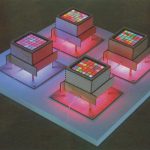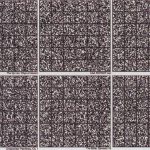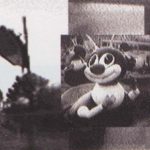Patrick Lichty
Art Works:
-

Pixelboxes
Categories: [3D & Sculpture]
[SIGGRAPH 2006] -

Made In China: Mao vs. Andy
Categories: [2D & Wall-Hung]
[SIGGRAPH 2005] -

Portraits in 8 Bits or Less
Categories: [3D & Sculpture]
[SIGGRAPH 2004] -

Encoder Study
Categories: [2D & Wall-Hung]
[SIGGRAPH 2004] -

8 Bits or Less (Series)
Categories: [2D & Wall-Hung]
[SIGGRAPH 2003]
Writings and Presentations:
-
Title:
The Aesthetics of Liminality: Augmentation as Artform
Writing Type: Paper
Author(s):
Exhibition: SIGGRAPH 2014: Acting in Translation
Abstract Summary:From ARToolkit’s emergence in the 1990s to the emergence of augmented reality (AR) as an art medium in the 2010s, AR has developed as a number of evidential sites. As an extension of virtual media, it merges real-time pattern recognition with goggles (finally realizing William Gibson’s sci-fi fantasy) or handheld devices. This creates a welding of real-time media and virtual reality, or an optically registered simulation overlaid upon an actual spatial environment. Commercial applications are numerous, including entertainment, sales, and navigation. Even though ARbased works can be traced back to the late 1990s, AR work requires some understanding of coding and tethered imaging equipment. It was not until marker-based AR, affording lower entries to usage, as well as geo-locational AR-based media, using handheld devices and tablets, that augmented reality as an art medium would propagate. While one can argue that AR-based art is a convergence of handheld device art and virtual reality, there are intrinsic gestures specific to augmented reality that make it unique. The author looks at some historical examples of AR as well as critical issues of AR-based gestures such as compounding the gaze, problematizing the retinal, and the representational issues of informatic overlays. This generates four gestural vectors, analogous to those defined in “The Translation of Art in Virtual Worlds,” which is examined through case studies. From this, a visual theory of augmentation will be proposed.
Role(s):




